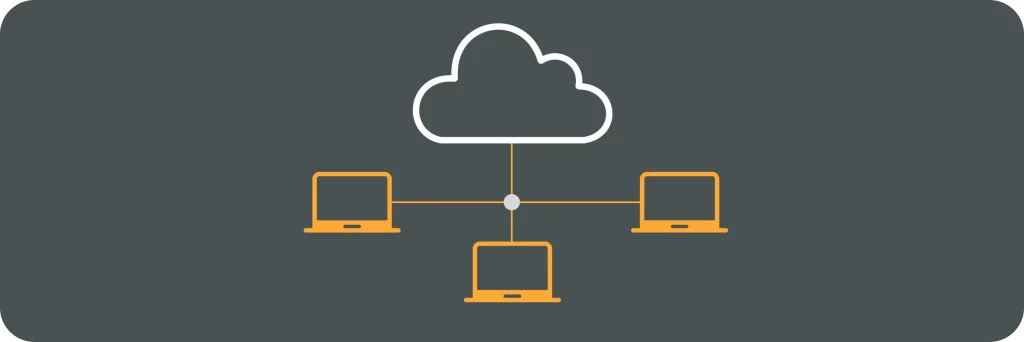In today’s cloud computing landscape, businesses are constantly seeking cost-effective solutions that meet their specific needs. One platform that has gained significant popularity in recent years is Amazon Lightsail. With its simplified interface and predictable pricing model, Lightsail offers a compelling option for small to medium-sized businesses looking to deploy applications and websites quickly and easily.
Understanding Amazon Lightsail Pricing
Before delving into cost optimization strategies, it’s essential to understand how Lightsail pricing works. Amazon Lightsail employs a straightforward pricing structure that combines a monthly fee for the chosen plan and additional charges based on resource usage. By comprehending the breakdown of these costs, businesses can make informed decisions and identify potential areas for optimization.
When it comes to Lightsail pricing, there are several key components to consider. First and foremost, there is the monthly fee, which covers the use of the virtual server. This fee varies depending on the chosen plan, allowing businesses to tailor their resource allocation and performance requirements to their specific needs. This flexibility is particularly beneficial for startups and small businesses that may have fluctuating demands.
In addition to the monthly fee, Lightsail pricing includes additional charges for storage, data transfer, and static IP addresses. These costs are calculated based on actual usage, ensuring that businesses only pay for what they consume. This pay-as-you-go model is advantageous as it eliminates the need for businesses to overestimate their resource needs and incur unnecessary expenses.
Furthermore, it’s important to note that there may be additional fees for specific services or features. For example, if businesses require load balancers or snapshots, they may incur additional charges. However, these services can provide valuable benefits such as improved scalability, redundancy, and data protection.
Breakdown of Lightsail Pricing
Lightsail pricing consists of three main components. First, there is the monthly fee, which covers the use of the virtual server. Depending on the chosen plan, this fee can vary, providing businesses with flexibility in terms of resource allocation and performance requirements. Secondly, additional charges are incurred for storage, data transfer, and static IP addresses. These costs are calculated based on actual usage, ensuring businesses only pay for what they consume. Lastly, there may be additional fees for specific services or features, such as load balancers or snapshots.
Understanding the breakdown of Lightsail pricing is crucial for businesses to effectively manage their costs and optimize their resource allocation. By carefully analyzing their usage patterns and requirements, businesses can make informed decisions about which plan and additional services are most suitable for their needs.
Hidden Costs to Watch Out For
While Lightsail offers transparent pricing, it’s crucial to be aware of potential hidden costs. One area businesses need to pay attention to is data transfer costs. Depending on the amount of data transferred in and out of the Lightsail instance, these costs can add up significantly. To mitigate this, it’s advisable to optimize data transfer by utilizing caching mechanisms and content delivery networks (CDNs) whenever possible.
Another potential hidden cost to watch out for is the storage usage. If businesses exceed the allocated storage limit of their chosen plan, additional charges may apply. It’s important to regularly monitor storage usage and consider implementing data archiving or deletion strategies to optimize costs and ensure efficient resource utilization.
Furthermore, businesses should also be mindful of any additional fees that may be associated with specific services or features. While these services can provide valuable benefits, it’s important to evaluate their necessity and potential impact on the overall cost structure.
In conclusion, understanding the intricacies of Amazon Lightsail pricing is crucial for businesses looking to optimize their costs and resource allocation. By carefully analyzing the breakdown of pricing components and being aware of potential hidden costs, businesses can make informed decisions and implement strategies to maximize their return on investment.
Strategies for Cost Optimization
Now that we understand the basics of Lightsail pricing, let’s explore strategies to optimize costs without compromising performance and functionality.
When it comes to cost optimization, there are several key factors to consider. One of the first steps is selecting the most appropriate Lightsail plan for your business. By carefully evaluating your resource requirements and performance needs, you can avoid overprovisioning and paying for unused capacity. Lightsail offers a range of plans, allowing businesses to scale up or down as required, ensuring optimal resource utilization at all times.
But choosing the right plan is just the beginning. Effective resource management is another crucial aspect of cost optimization. It involves monitoring resource usage regularly, identifying any unnecessary or underutilized resources, and making adjustments accordingly. For example, if certain instances consistently experience low utilization, it may be more cost-effective to consolidate workloads onto fewer instances or resize the instance to a lower plan.
Resource management also includes optimizing storage usage. By regularly reviewing your storage needs and removing any unnecessary files or data, you can ensure that you are not paying for storage that you don’t actually need. Additionally, using compression techniques and deduplication can help reduce the amount of storage space required, further optimizing costs.
Another area to focus on is network optimization. By analyzing your network traffic patterns and optimizing your network configuration, you can minimize data transfer costs. This can be achieved by using content delivery networks (CDNs) to cache and deliver static content closer to your users, reducing the amount of data that needs to be transferred from your Lightsail instances.
Furthermore, taking advantage of Lightsail’s built-in monitoring and analytics tools can provide valuable insights into your resource usage and performance. By closely monitoring your application’s performance metrics, you can identify any bottlenecks or areas for improvement, allowing you to optimize your resources and reduce costs.
In conclusion, cost optimization in Lightsail involves selecting the right plan, managing resources effectively, optimizing storage usage, optimizing network traffic, and utilizing monitoring and analytics tools. By implementing these strategies, businesses can achieve cost savings without compromising on performance and functionality.
Leveraging Lightsail Features for Cost Efficiency
In addition to selecting the right plan and managing resources effectively, Lightsail offers several features that can further enhance cost efficiency.
When it comes to cost efficiency, Lightsail provides businesses with a range of options to optimize their expenses. Let’s dive deeper into some of the key features that can help you make the most out of your Lightsail experience.
Utilizing Bundled Pricing
Lightsail offers bundled pricing for its instances, meaning you pay a fixed monthly fee that includes a pre-defined bundle of resources such as CPU, RAM, and storage. This pricing model allows businesses to have a clear understanding of their costs without any surprises at the end of the month.
By leveraging these bundled instances, businesses can benefit from significant cost savings compared to individually provisioning the same resources. It’s essential to evaluate your specific workload requirements and choose the bundle that offers the best balance of performance and cost.
For example, if your business requires a high-performance application, you can select a bundle with a higher CPU and RAM allocation. On the other hand, if you have a smaller workload, you can opt for a bundle with lower specifications, saving costs without compromising performance.
Furthermore, Lightsail allows you to easily upgrade or downgrade your bundle as your business needs evolve. This flexibility ensures that you are always paying for the resources you require, avoiding unnecessary expenses.
Taking Advantage of Static IP Addresses
Another way to optimize costs is by utilizing static IP addresses effectively. With Lightsail, each instance comes with a static IP address by default. This feature provides businesses with stability and consistency in their network configurations.
The ability to attach and detach these IP addresses allows businesses to allocate resources only when necessary, reducing costs associated with idle instances. For example, if you have a development environment that is only active during specific hours, you can detach the static IP address when it’s not in use, saving costs on unused resources.
Additionally, by associating static IP addresses with load balancers, businesses can streamline resource allocation and ensure efficient traffic distribution. Load balancers distribute incoming traffic across multiple instances, allowing businesses to scale their applications horizontally. This not only improves performance but also optimizes costs by efficiently utilizing resources.
Moreover, Lightsail provides the ability to reserve static IP addresses, ensuring their availability even after detaching them from instances. This feature is particularly useful for businesses that require consistent IP addresses for their applications or services.
By leveraging the bundled pricing and effectively utilizing static IP addresses, businesses can maximize their cost efficiency on Lightsail. These features, combined with the ability to easily manage resources and scale applications, make Lightsail a compelling choice for businesses of all sizes.
Monitoring and Controlling Lightsail Costs
Cost optimization is an ongoing process, and regular monitoring and control are crucial to ensure continued efficiency. Lightsail provides tools and features to help businesses stay on top of their costs.
Setting Up Alerts for Cost Management
Lightsail allows businesses to set up cost management alerts to receive notifications when costs reach specific thresholds. By proactively monitoring and managing costs, businesses can identify any unexpected spikes or trends and take appropriate action to prevent overruns. This feature provides valuable insights and helps maintain cost optimization over time.
Analyzing Billing Reports
Another way to gain visibility into Lightsail costs is by analyzing billing reports. These reports provide a detailed breakdown of costs, allowing businesses to identify areas of high expenditure. By regularly reviewing and analyzing billing reports, businesses can identify potential cost optimization opportunities and take necessary steps to optimize usage and expenses.
Optimizing Performance to Reduce Costs
While cost optimization is essential, it’s equally crucial to ensure optimal performance and user experience. By balancing performance and cost, businesses can maximize their Lightsail investment.
Balancing Performance and Cost
When optimizing performance, it’s important to strike the right balance that aligns with your business needs and budget. Overprovisioning can lead to unnecessary costs, while underprovisioning can result in poor performance and user dissatisfaction. Regular monitoring and analysis of resource utilization can help you find the sweet spot where performance and cost are optimized.
Reducing Data Transfer Costs
Data transfer costs can make a significant impact on overall expenses, especially for applications with high data transfer requirements. To reduce these costs, businesses can implement caching mechanisms, employ CDNs, and leverage compression techniques to minimize data transferred between Lightsail instances and external sources. By optimizing data transfer, businesses can achieve cost savings without sacrificing performance.
By implementing the strategies outlined above, businesses can effectively optimize costs while harnessing the power and reliability of Amazon Lightsail. A proactive approach to cost optimization ensures that businesses can scale efficiently, accommodate growth, and allocate resources intelligently. As cloud computing continues to evolve, Lightsail remains a cost-effective solution for businesses of all sizes.




